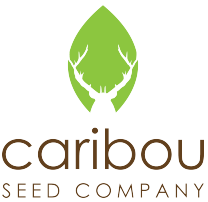germination
Most seeds are very easy to start indoors! You need some simple materials to get started, but the rest is easy.
Supplies
-
- your favorite seeds
- a growing container
- lukewarm water
- a good source of light
Containers
You can use any type of container to start your seeds, ie yogurt cups, margarine tubs, egg cartons, cell packs, trays from the nursery, or Jiffy pellets & trays. Remember the following key points to pick the best container for your seeds & seedlings.
- The container should have holes in the bottom for adequate drainage. Set plastic containers on dishes or plastic trays to collect excess water & dispose immediately.
- Plant containers for seedlings need to be extremely clean to avoid disease. You can disinfect containers with a mild bleach solution or use boiling water. (Be careful!)
Growing Medium
Good quality soil is essential to for seedling growth. Choose a 'soil-less' growing mix especially made for seedling growth. These mixes are usually made of peat moss, vermiculite or perlite.
Avoid using soil from your garden; it's too heavy, provides poor drainage and usually has organisms that are harmful to your seeds & seedlings.
Temperature
Seeds require warm soil and light to germinate. You can keep the seed trays consistently warm by placing them on top of a water heater or refrigerator.
Fluorescent lighting or heat lamps also can keep the soil warm. A heating mat can also be helpful. Please note that different seeds have different temperature requirements; always read the instructions carefully.
Once the seeds germinate, you want to grow the seedlings at a slightly lower temperature.
Water
Seeds need to be constantly moist in order to germinate; the soil can never dry out or become soggy. Before you sow the seeds, wet the growing mix with lukewarm water. Sow the seeds and cover your containers or trays with a plastic wrap, or bag to conserve water. Once germination has occurred and you see the first signs of plant growth, remove the plastic cover. Continue to water your seedlings with lukewarm water.
Light
Once seeds germinated, they require 14 hours of light for proper growth (very important for indoor germination and growth). A lack of light will result in weak seedlings, as they "stretch" to find light sources. Typically these seedlings will grow very tall, fall over and then die. :( This is also known as "leggy" growth.
There's a few ways to prevent this from happening.
- Use fluorescent or grow lights to encourage healthy growth. The lights should be about 2-4 inches above the seedlings. (Adjust the height of the light as the plants grow)
- If you don't have lights, you can place the seedlings by a window that faces south east. Rotate your containers so the seedlings don't bend.
Transplanting Outdoors
Hardening off is basically getting your small plants ready to face the great outdoors. There are many different ways this can be accomplished. At least a week before you plan to set the plants into the ground they need to gradually get used to the sun, wind and various outdoor temperatures. You can also place your plants in a shaded, sheltered part of your garden for a few hours each day, gradually moving them into more sun. These unprotected plants will have to be brought back indoors each night unless you know it is going to stay above 50°F/10°C all night long.
Once the plants have been hardened, they're ready for planting! (Finally, all that hard work is about to pay off). Space plants 8 to 12 inches apart in garden beds, containers or hanging baskets. Firm soil around the base of the plant and water immediately.
Care & Maintenance
Most plants need regular moisture for healthy growth. Be sure to water regularly, never allowing the plant to dry out between each watering. Remove spent flowers from the stem as they fade.
Hope that helps! If you have any questions, please don't hesitate to contact us.
